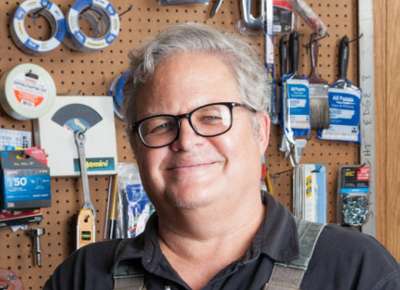Top Image: 393 le IG 18 75mm gun. Courtesy of The National WWII Museum.
In 2007, the Museum acquired a German le IG 18 75mm Infantry Support Gun. The gun was developed in the mid-1920s in response to German interpretation of lessons learned in World War I. In 1915, Germany began introducing new infantry assault tactics. These were well developed by 1918, when Sturmtruppen were employed in the spring offensives. As attacks advanced and the ability to call on artillery support was lost, an encounter with a strong point could stop an attack. It was determined that infantry needed artillery in direct support to overcome these strong points. Captured Russian guns had been pressed into service to fill this need in World War I, but they were too heavy to be moved forward fast enough to keep up with the advance.
The le IG 18 was designed to be a light weight gun, capable of direct and indirect fire. Weighing in at 880 pounds, the 75mm gun fired a 13 pound high explosive round to a maximum range of 3,870 yards. Mass production of the weapon began in 1932 and by the end of the war 11,199 had been produced. Although used throughout the war, the prime importance of this piece was in the early German campaigns from Poland to Dunkirk in 1939-1940, where its small size and heavy punch were especially suited to the terrain of Western Europe.
The Museum’s gun is marked with the manufacturing code fnh which indicates Boehmische Waffenfabrik, Strakonitz Plant, Prague. Although undated, the factory location indicates that it was produced some time after March 1939.
The gun was restored when purchased, and had been painted a light tan with Afrika Korps markings. There is some disagreement among historians concerning the deployment of these guns to North Africa. There is evidence to suggest they were never sent to North Africa, or that they were sent there but not used in combat. The open terrain, and their short range, would have limited the usefulness of these weapons. It was decided to repaint the gun for interpretive reasons to a camouflage scheme appropriate to the 1943-1945 period in Europe.
German camouflage doctrine changed several times during the war. It was desired to keep this in mind when painting the gun to provide appropriate depth to the paint ,and a finish consistent with work done by units rather than at the factory. Before 1939, the German Army painted all of its equipment dark grey. In 1939, a change was made to a two tone scheme of a dark grey base coat and a disrupted coat of dark brown covering about one-third of the surface. By the end of 1942, experience demonstrated that the dark gray color made an easy target. As a result, the base color of equipment was changed to dark yellow. This was to be supplemented with application of dark brown and dark green in disrupted patterns to blend with the local conditions.
Multiple coats of paint were used to create the finished product. Four gallons of paint were custom mixed at the local automotive paint store. One each in dark grey, dark yellow, dark brown, and dark green matched to color chips from modeling paints. An enamel base was used and the paint was applied with a Binks type spray gun. First a very careful and complete coat of dark grey was applied to the gun. Then a disrupted pattern of dark brown was applied, except that this was done with less care. Only areas with easy access were painted. No dark brown was applied to the underside of the gun, and the back of the gun shield behind the axle was not painted. The back side of the folding gun shield extension was also not painted. After all it was folded down when the paint was applied. After that paint dried, a coat of dark yellow was sprayed as a base coat. Again not every area was covered. Finally, disrupted patterns of dark green and dark brown were applied. The end result was a patchwork appearance that can be seen when carefully inspecting the gun. I believe this attention to detail or lack of it, coupled with layering, presents an appearance consistent with the original appearance from 1943-1945.
-

384 Unpainted section of lower gun shield. Courtesy of The National WWII Museum.
-

397 Partially painted back of gun shield. Courtesy of The National WWII Museum.
The majority of the Museum’s vehicle collection consists of US pieces. Only limited use was made of camouflage paint by the US military, so most vehicles vary only in the details of their markings. The opportunity for new research made painting the infantry support gun an interesting project. Sources intended for war gaming and modeling proved very helpful.

Shop Talk: Three Jeeps
When restoring a vehicle, paint is one of the most important aspects.
Tom Czekanski
Cite this article:
MLA Citation:
APA Citation:
Chicago Style Citation:

![Max Fuchs, New York City cantor, sings as Rabbi Sydney [sic] Lefkowitz, Richmond, VA, conducts the first Jewish services from Germany.](/sites/default/files/styles/max_650x650/public/2025-10/image1.jpg)






